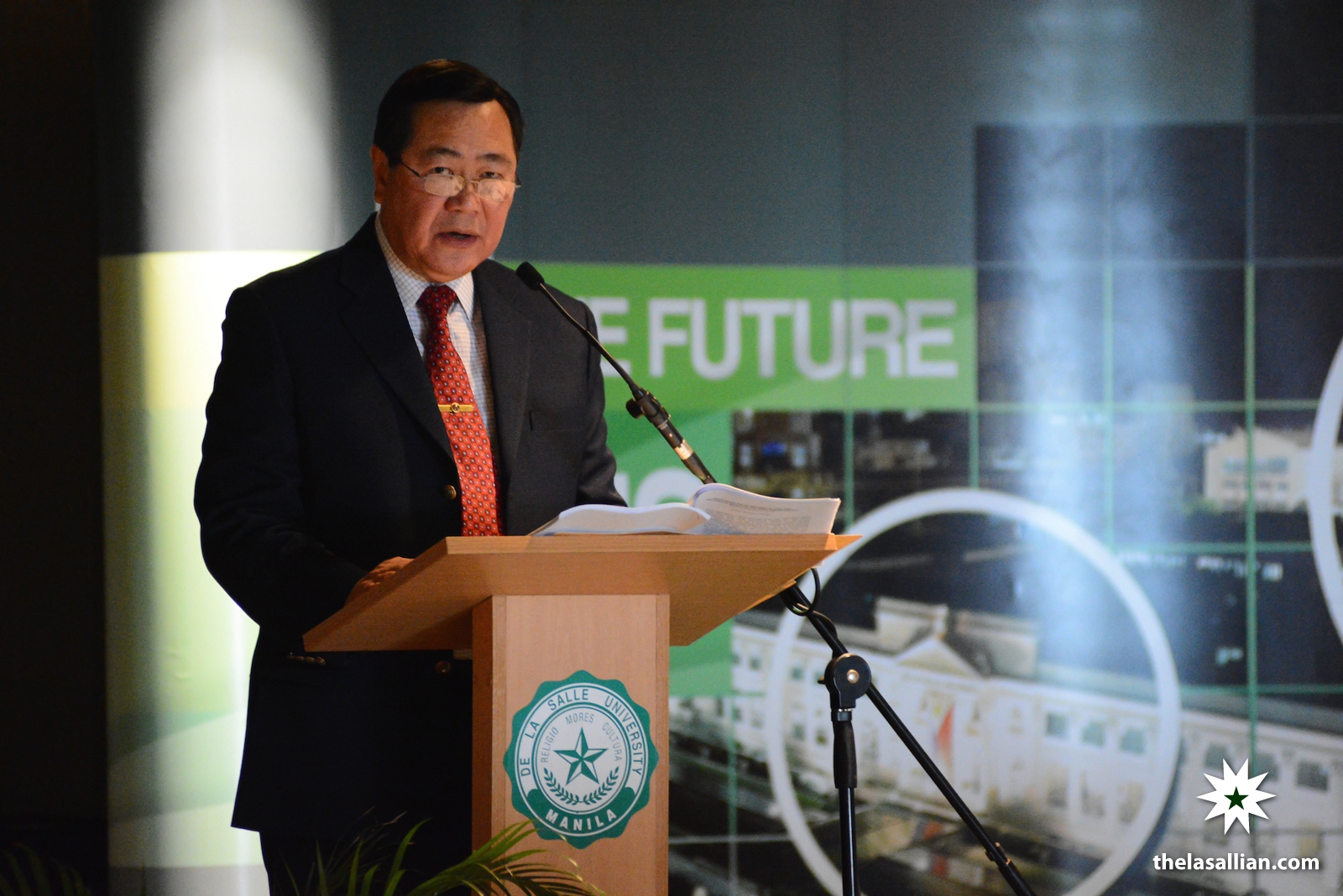
Supreme Court Senior Associate Justice Antonio T. Carpio gave a lecture on the West Philippine Sea on Friday, June 6, at the Henry Sy, Sr. Hall. Entitled “Historical Facts, Historical Lies, and Historical Rights in the West Philippine Sea,” the lecture centered in on Carpio’s scholarly research regarding China’s historical basis of sovereignty over disputed waters on the West Philippine Sea.
In attendance were officials from the Supreme Court and the Department of Foreign Affairs, members of the diplomatic corps, the media, government officials, and the Lasallian community. The event was organized by the University’s College of Law (COL) and College of Liberal Arts (CLA).
COL Dean Atty. Jose Manuel Diokno opened the lecture with his welcoming remarks. He stated that the West Philippine Sea is on the mind of many Filipinos, yet many have only superficial ideas on the issue.
Carpio began his lecture on the much-debated territorial disputes by stating that China posits that historical claims are “in accordance of universally recognized principles of international law including the 1982 United Nations Convention on the Laws of the Sea (UNCLOS),” despite the contrary. He also added that China believes that “territories passed down by previous generations should not be given up.”
Continuing the discussion on historical claims, Carpio said that ancient conquests cannot be invoked under international law to claim territories. China claims that Guo Shoujing, an astronomer, went and surveyed Scarborough Shoal in 1279.
Carpio cited the 1928 Palmas Island dispute, a case between the United States acting for the Philippines and the Netherlands for Indonesia. The island is in between Mindanao and Indonesia. The Permanent Court of Arbitration later found that, “A state cannot maintain title to a territory based on discovery alone where another state practices territorial sovereignty,” according to Carpio.
Carpio continued to the lecture proper and explained the weakness of China’s claim based on historical maps. He showed around 70 historical maps showing both China and Philippines. In China’s maps, it is shown that China’s southernmost territory is Hainan Island while the Philippines’ maps show that Scarborough Shoal (or ‘Bajo de Masinloc’ in other maps) has always been included as a part of the Philippines.
The lecture proper was succeeded by an open forum moderated by Chito Sta. Romana, China-based producer for ABC News in the United States.
When asked by Raissa Robles of the South China Morning Post on the reason why the Philippines went to the UNCLOS, Carpio said that the Philippines could never win a naval, economic, or diplomatic battle with China. He adds that a level-playing field is provided with UNCLOS as all countries are considered equal in arbitration cases.
Former secretary of the Department of Tourism and Department of the Interior and Local Government Raffy Alunan then posed the question of how China will respect the decision of the tribunal if it falls in favor with the Philippines. Carpio answered that world opinion would be on the side of the Philippines. He said that this will put pressure on China to accept the claims of the Philippines.
Representative Roilo Golez from Parañaque City’s Second District asked if the historical claims of the Philippines were presented in the memorial, an arbitration document, which the government submitted to the UNCLOS last March. Carpio responded that they were not included as the tribunal does not recognize historical claims.
In his closing remarks, CLA Dean Julio Teehankee proclaimed, “Filipinos should be courageous [and] be able to stand [their] ground.”

6 replies on “Justice Carpio delivers lecture in DLSU, deconstructs China’s territorial claims”
[…] Read more: http://thelasallian.com/2014/06/07/justice-carpio-delivers-lecture-in-dlsu-deconstructs-chinas-terri… […]
.
ñïàñèáî!!
.
good.
.
áëàãîäàðþ!!
.
thanks.
.
tnx.